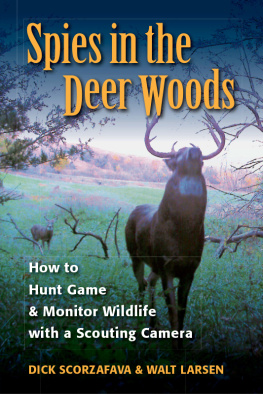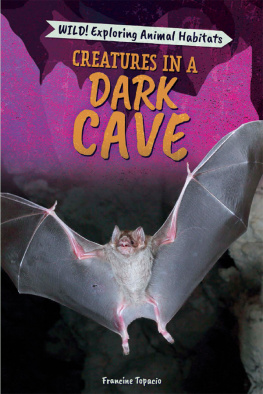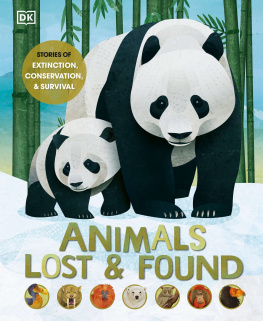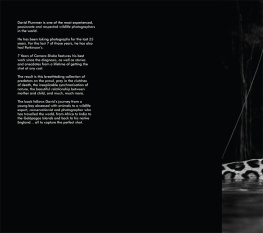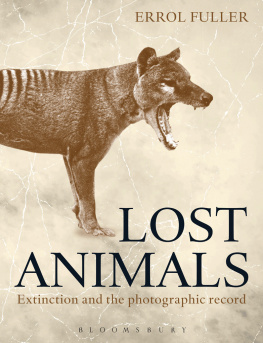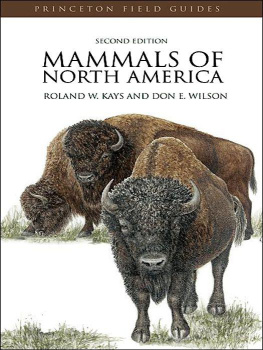Candid Creatures

Candid Creatures
ROLAND KAYS

HOW CAMERA TRAPS REVEAL THE MYSTERIES OF NATURE

2016 Johns Hopkins University Press
All rights reserved. Published 2016
Printed in China on acid-free paper
9 8 7 6 5 4 3 2 1
Johns Hopkins University Press
2715 North Charles Street
Baltimore, Maryland 21218-4363
www.press.jhu.edu
Library of Congress Cataloging-in-Publication Data
Names: Kays, Roland, 1971. author.
Title: Candid creatures : how camera traps reveal the mysteries of nature Roland Kays.
Description: Baltimore : Johns Hopkins University Press, 2016. | Includes bibliographical references and index.
Identifiers: LCCN 2015017512 | ISBN 9781421418889 (hardcover : alk. paper) | ISBN 9781421418896 (electronic) | ISBN 1421418886 (hardcover : alk. paper) | ISBN 1421418894 (electronic)
Subjects: LCSH: AnimalsPictorial works. | Animals. | Animal behaviorPictorial works. | Wildlife photography.
Classification: LCC QL46 .K39 2016 | DDC 590dc23 LC record available at http://lccn.loc.gov/2015017512
A catalog record for this book is available from the British Library.
Special discounts are available for bulk purchases of this book. For more information, please contact Special Sales at 410-516-6936 or .
Johns Hopkins University Press uses environmentally friendly book materials, including recycled text paper that is composed of at least 30 percent post-consumer waste, whenever possible.
To
Judy,
Eli, and
Fletcher
CONTENTS
ACKNOWLEDGMENTS
First and foremost, I am completely indebted to the hundreds of camera trappers who shared their photographs and discoveries with me. This book could never have happened without their hard work in the field setting many thousands of camera traps around the world. The 613 photographs come from 153 different research groups, many of which represent large teams, meaning that many thousands of people helped run the cameras that generated the photos and discoveries featured here. Hiking through the woods to the next camera is only part of the work; these camera trappers also sorted through many millions of photographs, tabulating each as a data point for their research and saving just a few in their folder of greatest hits. They graciously shared these collections of their best photos with me, from which I picked the very best that I could find to tell the stories of their discoveries.
This book is more than just pretty picturesit also represents a summary of the scientific discoveries and conservation accomplishments of these research projects. The literature cited has 240 citations referencing the scientists original work, which I have tried to summarize in the text, graphs, and maps. I am grateful to many colleagues who were willing to share preliminary results or raw data to help me accurately represent their latest discoveries. I also am greatly indebted to the staff and volunteers of the eMammal project, a citizen science camera effort that I work with, which contributed many photographs and findings. Eric Knisley helped convert some of this science into art by creating the original artwork in the Animal Neighborhood Watch section. Many thanks to him for his creativity and patience to make sure the pieces were both accurate and interesting.
A number of people helped read the text, and their attention greatly improved the accuracy and flow of the writing. Thanks for reviews from Laila Bahaa-el-din, Danielle Brown, Iain Gilby, Matt Gompper, Klaus Hacklaender, Patrick Jansen, Judy Kays, John Perrine, Robin Sandfort, and Stephanie Schuttler. Three undergraduate students from North Carolina State University helped with the early phase of this book; thanks to Summer Higdon, Rebecca Owens, and Gabriella Quinlan for their research and ideas. Thanks to Kathryn Marguy and Vincent Burke at Johns Hopkins University Press for helping bring this book to fruition. Finally, thanks to my family, Judy, Eli, and Fletcher, for helping me run cameras and chase critters.
Candid Creatures

Introduction
The world is alive with animals that we virtually never see with our own eyes. Most wildlife, especially mammals, hear or smell us long before we see them. Some hide out in holes or thickets as we pass by. Others run away to avoid us before we can catch a glimpse. Many species are nocturnal, starting their activity right when we are winding down our day, hiding under the cover of darkness. The rarest and most elusive species live in remote corners of the world that are difficult to access.
The near impossibility of seeing some wildlife species frustrates nature lovers and exasperates zoologists. How can we study or count animals we cant see? Some are rare and listed as Endangered Species; others we know so little about we cant assess them, instead classifying them as Data Deficient. The scientists solution to this problem is the camera trapa motion-sensitive camera that can be left alone in nature to quietly record photographs of any animals that pass by.
CAMERA TRAPS REVEAL NATURES SECRETS
Like microscopes for microbiologists or telescopes for astronomers, camera traps give zoologists a new way to observe the subjects they study. Each of these inventions created new ways of seeing, opening windows on the natural world and leading to rapid scientific development in their fields. Not only are camera traps a unique way to look at critters, but the tool has transformed the way wildlife science is conducted and is having important implications for our understanding of these animals. The photos are translated into data, which are used to ask questions and test hypotheses. Modern studies use dozens of camera traps over hundreds of locations to collect many thousands or millions of photographs. Each image registers which species are living in a given place at a given time. The identity of the species in the photo can be checked and verified, an important part of the scientific process. Indeed, the camera trap photograph offers a way to measure biodiversity, a testament to life on earth similar to the traditional animal skins and skeletal specimens stored in the collections of our great natural history museums. These new digital libraries of camera trap photos provide a snapshot of the abundance and diversity of animal communities around the world.

An endangered Grvys zebra is caught on camera on a hot day in Kenya. Text at the top of the photo records the date and time, that this was the third of three consecutive photos after the animal triggered the motion sensor, and that the temperature was 100F. The text at the bottom records the camera make and model, and sometimes a customizable code.
The stories in this book are about the discoveries made by scientists probing the secrets of nature with camera traps. The mere existence of a species, documented with a camera trap photo, can be a discovery on its own. Sometimes it can be a species new to science, or it may be the rediscovery of a rare animal feared extinct. Unique behaviors can also be documented by cameras, which wait soundlessly with more patience than any human observer possibly could. Often the discoveries come later, once the images have been converted to numbers and summed up in a database. The resulting patterns of where animals are and are not present can reveal the forces of nature, and of humans, in determining which species survive where.
Next page

